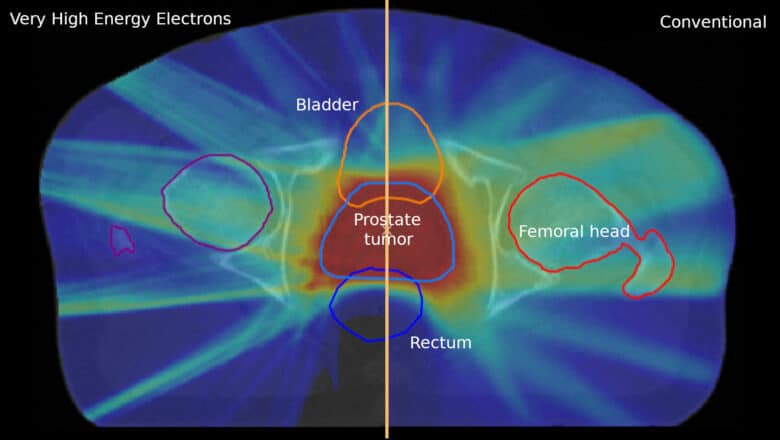
Typically after diagnosis, the most common treatment for prostate cancer begins with removal of the prostate. Followed by radiation, chemotherapy, hormone therapy, or a combination of all of these. Yet there are usually very few treatment options if the cancer is already at an advanced stage. One of these is via a prostate specific membrane antigen (PSMA) present on the tumor. This antigen not only makes the tumor cells visible, but it can also destroy them.
Doctors at the University of Saarland in Saarbrücken have now discovered that a drug that had essentially already been deemed ineffective leads to the formation of many more PSMA molecules on the tumor’s surface. This allows far more radioactive material to be directed to the tumor cells than has been possible up until now.
Destroying cells from the inside out
Two receptors on the surface of the tumor are decisive factors. The ‘Prostate Specific Membrane Antigen‘ (PSMA), which is very often found on the surface of prostate tumors. In addition, another type of receptor plays a role on the surface of the tumor where it attracts male sex hormones such as testosterone. With the help of PSMA, scientists have succeeded in guiding radioactive substances to the tumor cell. Once there, they destroy the malignant cells from the inside out. In principle, the more radiation that the doctors are able to introduce into the cells, the more effective it is without having to increase the total dose.
“Prostate tumors need testosterone like a car needs gasoline,” explains Professor Samer Ezziddin. He’s a specialist in nuclear medicine. Like his colleagues, Endizzin specializes in the treatment of advanced prostate cancer. A targeted therapy aims to block these receptors and thereby rid the cancer of its fuel. “For some time now this has worked very well with medicines such as enzalutamide. The tumor shrinks as a result,” the doctor explains. “After a certain period of time – a few months, maybe even two years if all goes well – this medicine stops working and the tumor starts to grow again. As the drug is no longer effective, it is usually discontinued.”
More research required
Scientists discovered the special advantages of this apparently ineffective agent by relying on their gut instincts. “We already had a suspicion. Later we saw clear indications that PSMA density increases when the androgen receptor is blocked on the tumor surface where testosterone attaches itself,” Ezziddin states. “We were able to demonstrate that administering enzalutamide led to a significant increase in PSMA density on the tumor surface. Even though it had little or no effect in its original intent and administration of it had already been discontinued,” Samer Ezziddin explains.
While the study was limited to just ten patients, the number of PSMA molecules on the tumor cells increased significantly in all patients after doses of enzalutamide were administered. “This allows us to bring far more radioactive compounds into the tumor cells and treat these with radiation at a localized, micrometer level from within,” explains Ezziddin. Thanks to the so-named PSMA-directed radioligand therapy (PSMA-PRLT), prostate tumors can be treated much more efficiently and with far less damage to the body than in the past.
“The following step will be to examine these research results in more detail. And substantiate them with additional extensive research,” says Samer Ezziddin. However, both he and his colleagues were keen to share their results as quickly as possible. That’s because many patients could benefit from these new findings, he emphasizes. “That’s why we decided to make this brief announcement. As I believe that even though this research may be limited, it will lead to a drastic change in the treatment of advanced prostate cancer.”








